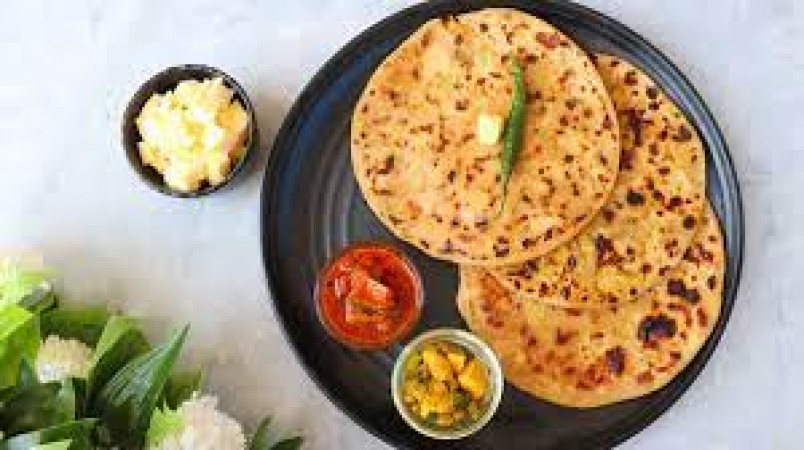
Stuffed parathas are a beloved culinary delight in many households. These Indian flatbreads are not only delicious but also fun to make. However, getting the stuffing to stay inside without tearing the paratha can be a bit tricky. We've got you covered with some expert tips to ensure your stuffed parathas come out perfect every time.
The first step to ensuring your stuffed parathas don't tear while rolling is choosing the right filling. Opt for ingredients that are not too watery or have excess moisture. Dry fillings like spiced potatoes, paneer, or lentils work best.
Dry fillings are your best bet. Ingredients like mashed potatoes, crumbled paneer (Indian cottage cheese), cooked lentils, or minced vegetables work well. Avoid fillings with too much moisture, as they can make the paratha soggy and prone to tearing.
Ensure your filling is well-seasoned. A flavorful filling complements the plain dough and elevates the taste of your stuffed paratha.
To create a sturdy paratha, you must have a good dough. A well-kneaded dough with the right consistency is crucial.
Opt for whole wheat flour, known as "atta," for a traditional touch. It offers better texture and flavor compared to all-purpose flour.
Knead your dough using warm water. Warm water softens the dough, making it more pliable and easier to work with. Start with small amounts of warm water and gradually add more as needed.
A pinch of salt in the dough enhances the flavor and helps the gluten develop, making the dough more elastic.
Kneading is essential for developing the gluten in the dough. Knead it for at least 5-7 minutes until it's smooth and elastic.
Divide your dough and filling into equal portions. This ensures that the paratha is evenly stuffed and less likely to tear.
For precise measurements, a kitchen scale can be handy. Weigh the dough and filling to ensure equal portions.
Shape both the dough and filling into small, uniform balls. This consistency ensures that each paratha is equally stuffed.
When rolling out the dough, make sure it's thin but not too thin. A medium thickness will prevent the filling from breaking through.
Roll the dough with gentle, even pressure to maintain an even thickness. Avoid pressing too hard, as it can make the dough too thin or cause it to tear.
Use a clean, dry surface for rolling out the dough. Dust it lightly with flour to prevent sticking.
Roll the dough in a circular motion, rotating it after each roll. This helps achieve an even thickness.
Spread the filling evenly on the rolled dough, leaving some space at the edges. This will help seal the paratha better.
Spread the filling as evenly as possible, leaving about a half-inch border around the edges. This border is crucial for sealing the paratha.
You can use a spoon or your fingers to evenly distribute the filling. Avoid pressing too hard to prevent tears.
Fold the sides of the dough over the filling, then fold the top and bottom, creating a neat square or rectangle.
You can shape your stuffed parathas into triangles or squares, depending on your preference. The tri-fold technique works for both shapes.
When folding the dough over the filling, make sure to pinch and seal the edges well. This ensures that the filling remains enclosed during cooking.
Handle the stuffed paratha with care. Rough handling can lead to tears and stuffing spillage.
Take your time while rolling out the stuffed paratha. A slow, steady approach is your best friend. Gentle hands are your secret weapon against tearing.
Don't panic if you notice a small tear. Simply patch it with a small piece of dough, moistened slightly with water, and press it to seal the tear.
Ensure your pan is hot before you place the stuffed paratha on it. A cold pan can cause sticking and tearing.
Using a non-stick pan with a little oil is ideal for preventing sticking and ensuring an even cooking surface.
Preheat the pan on medium heat. Too hot, and the paratha may burn; too cold, and it might stick.
When flipping the paratha, do it gently. Use a spatula to avoid any sudden movements that might damage the paratha.
Slide a spatula under the paratha and flip it with care. A gentle approach ensures that the paratha stays intact.
Like any culinary skill, making perfect stuffed parathas takes practice. Don't get discouraged if your first attempts aren't flawless.
Perfecting the art of making stuffed parathas comes with practice. Each attempt will bring you closer to mastery. With these expert tips, you'll master the art of making stuffed parathas that won't tear while rolling. Choosing the right filling, kneading the perfect dough, and handling the paratha with care are the keys to success.
People of this zodiac sign will be free from worries related to children, know your horoscope